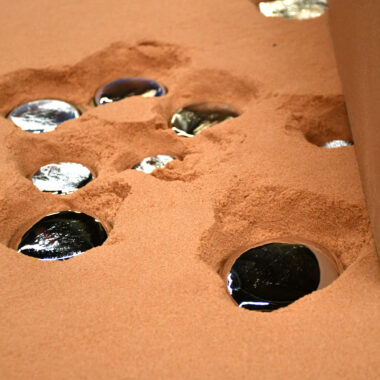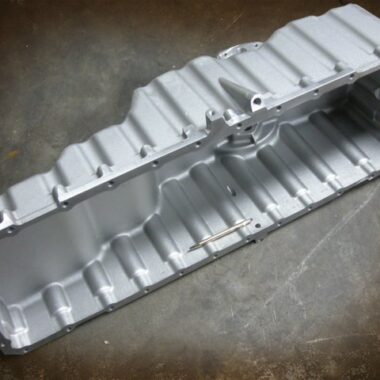Revealing the Art of Aluminum Casting: A Comprehensive Overview for Beginners
In the world of metalworking, aluminum casting stands as a craft that marries creativity with precision. As novices get started on this journey, they are faced with a labyrinth of strategies, tools, and safety and security procedures that develop the structure of grasping the art of aluminum casting.
History of Aluminum Casting

One of the vital milestones in the background of aluminum casting was the innovation of the initial light weight aluminum spreading equipment in 1886 by Charles Martin Hall. Over the years, innovations in technology have actually further fine-tuned the light weight aluminum casting procedure, making it more exact, cost-effective, and eco friendly.
Essential Tools for Newbies
When getting started on the journey of light weight aluminum spreading as a novice, getting the vital devices is critical for guaranteeing a effective and smooth spreading process. Flask and molding sand are crucial for developing mold and mildews right into which the molten light weight aluminum is put. With these necessary tools in hand, beginners can kickstart their light weight aluminum casting trip with self-confidence.
Fundamental Action In Aluminum Casting
To initiate the light weight aluminum spreading process successfully, beginners must first prepare the mold and mildew and ensure its appropriate placement within the mold and mildew frame. When the mold and mildew is all set, the following step entails thawing the aluminum. This can be done making use of a heater or a straightforward lp torch, relying on the scale of the project. The molten light weight aluminum is after that meticulously put right into the mold, filling it to the brim. It is important to permit the aluminum sufficient time to strengthen and cool down inside the mold and mildew before trying to eliminate the spreading.
After the aluminum has actually cooled and solidified, the mold and mildew needs to be open up to expose the recently formed spreading. Newbies need to wage care throughout this action to avoid damaging the mold and mildew or the casting. The excess material, referred to as the sprue and any added blemishes, can be removed by trimming and sanding the casting. The casting can be polished and completed according to the wanted specs. Mastering these basic steps is important for novices wanting to explore the art of aluminum casting.
Typical Kinds of Light Weight Aluminum Alloys
Among the key considerations in aluminum spreading is recognizing the varied variety of aluminum alloys commonly utilized in the process. Light weight aluminum alloys are identified based on their chemical structure and homes, with each type offering distinct attributes fit for various casting applications. One typical light weight aluminum alloy is A356, recognized for its exceptional castability and great mechanical buildings, making it popular in numerous sectors such as auto and aerospace. Another extensively used alloy is 6061, valued for its high toughness and deterioration resistance, making it suitable for marine applications and architectural elements. Furthermore, the 380 alloy is preferred for its remarkable fluidness and machinability, making it a top choice for detailed castings calling for complex details. Recognizing the buildings and advantages of these usual aluminum alloys is essential for newbie casters to pick one of the most proper alloy for their specific casting needs, ensuring quality end results in their spreading projects - aluminum casting illinois.
Safety And Security Preventative Measures in Casting Light Weight Aluminum
Taking into consideration the critical role of aluminum alloys in the spreading process, prioritizing security preventative measures is vital to make sure a efficient and protected casting atmosphere. When working with liquified light weight aluminum, it is crucial to use ideal individual safety tools (PPE) such as heat-resistant gloves, aprons, deal with guards, and safety and security goggles to stop injuries and burns. In addition, make certain appropriate air flow click this link in the spreading area to reduce direct exposure to harmful fumes and gases launched during the melting procedure.
To avoid prospective fires, constantly have a fire extinguisher close-by and develop a clear evacuation strategy in case of emergency situations. It is vital to conduct normal safety training sessions for all employees included in the spreading operation to educate them on best methods and emergency procedures. Correct handling of tools, consisting of crucibles, ladles, and mold and mildews, is important to stop mishaps and keep a risk-free functioning atmosphere.
Additionally, Discover More keeping a organized and tidy office can help in reducing the danger of slides, journeys, and falls. By adhering to these security precautions, novices can create a safe and secure foundation for mastering the art of light weight aluminum casting.
Conclusion

It was not up until the 19th century that significant innovations in aluminum casting were made, specifically with the development of a lot more reliable methods for melting and shaping aluminum alloys.
One of the key milestones in the history of aluminum casting was the innovation of the very first light weight aluminum spreading machine in 1886 by Charles Martin Hall.When embarking on the trip of light weight aluminum spreading important source as a beginner, acquiring the necessary tools is critical for making certain a smooth and successful casting procedure.One of the vital factors to consider in aluminum casting is recognizing the diverse variety of aluminum alloys typically used in the process. By recognizing the basic actions and necessary devices entailed in light weight aluminum spreading, newbies can efficiently function with various types of aluminum alloys.